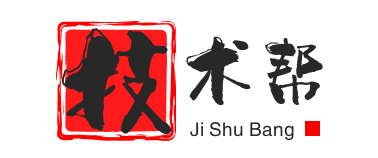在网页设计中,动态背景图能够为用户带来更加生动和吸引人的视觉效果,实现这一功能,可以通过多种方法来完成,包括使用CSS动画、SVG动画、JavaScript或者HTML5的Canvas等技术,下面,我们将详细介绍如何使用这些技术来制作动态背景图。
让我们从CSS动画开始,CSS动画是一种简单且广泛支持的方法,它可以让我们通过关键帧动画来实现背景图的动态效果,以下是一个简单的例子,展示了如何使用CSS来创建一个渐变的动态背景:
<!DOCTYPE html>
<html lang="en">
<head>
<meta charset="UTF-8">
<meta name="viewport" content="width=device-width, initial-scale=1.0">
<title>动态背景图</title>
<style>
body, html {
height: 100%;
margin: 0;
}
@keyframes gradientBG {
0% { background: linear-gradient(to right, #ff7e5f, #feb47b); }
50% { background: linear-gradient(to right, #a29bfe, #6d59c0); }
100% { background: linear-gradient(to right, #ff7e5f, #feb47b); }
}
.background {
animation: gradientBG 10s infinite alternate;
background-size: 400% 400%;
animation-timing-function: ease;
}
</style>
</head>
<body>
<div class="background"></div>
</body>
</html>
在这个例子中,我们使用了@keyframes规则来定义一个名为gradientBG的动画,它会在10秒内完成,并无限循环,动画的开始和结束都是一个从左到右的渐变,但在中间的50%时,渐变的颜色会发生变化,通过设置background-size和animation-timing-function,我们可以让背景图的动画更加平滑和自然。
接下来,我们可以使用SVG动画来创建动态背景,SVG是一种基于XML的矢量图形格式,它允许我们通过定义路径、形状和渐变等元素来创建复杂的图形,以下是一个使用SVG动画的动态背景图的例子:
<!DOCTYPE html>
<html lang="en">
<head>
<meta charset="UTF-8">
<meta name="viewport" content="width=device-width, initial-scale=1.0">
<title>动态背景图</title>
<style>
body, html {
height: 100%;
margin: 0;
}
.background {
width: 100%;
height: 100%;
background: url('data:image/svg+xml,<svg xmlns="http://www.w3.org/2000/svg" viewBox="0 0 100 100"><defs><linearGradient id="grad1" x1="0%" y1="0%" x2="100%" y2="0%"><stop offset="0%" style="stop-color:rgb(255,255,0);stop-opacity:1"/><stop offset="100%" style="stop-color:rgb(255,0,0);stop-opacity:1"/></linearGradient></defs><rect x="0" y="0" width="100%" height="100%" fill="url(#grad1)" /></svg>') no-repeat center center;
background-size: cover;
}
</style>
</head>
<body>
<div class="background"></div>
</body>
</html>
在这个例子中,我们创建了一个SVG元素,并定义了一个名为grad1的线性渐变,我们使用这个渐变作为矩形的填充,并将这个SVG设置为背景图,由于SVG是矢量图形,所以这种方法可以很好地适应不同尺寸的屏幕。
我们可以使用JavaScript和HTML5的Canvas来创建更加复杂和自定义的动态背景,以下是一个使用Canvas和JavaScript创建动态背景图的例子:
<!DOCTYPE html>
<html lang="en">
<head>
<meta charset="UTF-8">
<meta name="viewport" content="width=device-width, initial-scale=1.0">
<title>动态背景图</title>
<style>
body, html {
height: 100%;
margin: 0;
overflow: hidden;
}
#canvas {
width: 100%;
height: 100%;
}
</style>
</head>
<body>
<canvas id="canvas"></canvas>
<script>
const canvas = document.getElementById('canvas');
const ctx = canvas.getContext('2d');
const width = canvas.width;
const height = canvas.height;
let particles = [];
function createParticles() {
for (let i = 0; i < 100; i++) {
particles.push({
x: Math.random() * width,
y: Math.random() * height,
size: Math.random() * 5 + 2,
vx: Math.random() * 2 - 1,
vy: Math.random() * 2 - 1,
color: '#' + Math.floor(Math.random() * 16777215).toString(16),
});
}
}
function drawParticles() {
ctx.clearRect(0, 0, width, height);
particles.forEach((particle) => {
ctx.beginPath();
ctx.arc(particle.x, particle.y, particle.size, 0, Math.PI * 2, false);
ctx.fillStyle = particle.color;
ctx.fill();
particle.x += particle.vx;
particle.y += particle.vy;
if (particle.x < 0 || particle.x > width) particle.vx *= -1;
if (particle.y < 0 || particle.y > height) particle.vy *= -1;
});
}
function animate() {
drawParticles();
requestAnimationFrame(animate);
}
createParticles();
animate();
</script>
</body>
</html>
在这个例子中,我们首先创建了一个Canvas元素,并获取了它的上下文,我们创建了一个粒子数组,每个粒子都有自己的位置、大小、速度和颜色,在drawParticles函数中,我们清除画布并重绘所有的粒子,在animate函数中,我们调用drawParticles函数,并使用requestAnimationFrame来循环执行动画,从而创建出动态的背景效果。
以上就是制作动态背景图的几种方法,你可以根据你的需求和技术水平选择最适合你的方法,记住,动态背景图虽然能够吸引用户,但也可能影响页面的加载速度和性能,所以在使用时需要权衡利弊。

